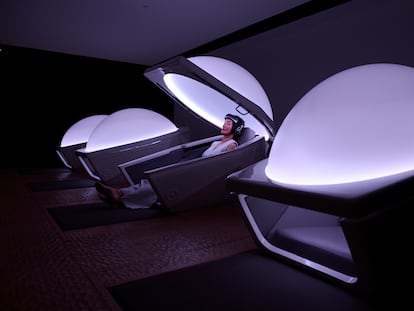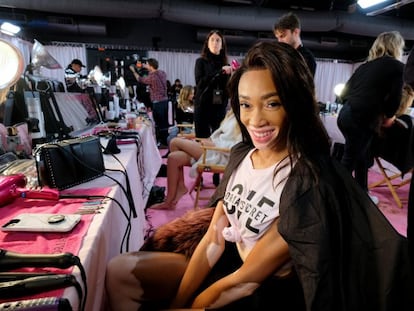How is a cream worth $50 different from another one worth more than $500? Marketing is not the only thing
Years of research, exclusive patents, and the use of scarce raw materials increase the price of creams that promise to reach the deepest layers of the dermis with greater power and effectiveness. We compare the real differences between ‘premium’ products and other much more affordable ones
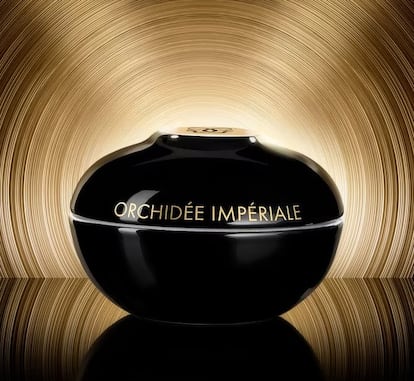
Can a skin care product tempt us to write a blank check? Formulated with vitamin C, retinol, AHAs, hyaluronic acid, or beautiful flowers as a claim for cosmetics that promise to eliminate wrinkles, spots, sagging, and imperfections. It is never easy to buy a cream when we consider that its effects are never miraculous and only begin to be noticed after the first month of use. In stores, they share a physical space with creams that start at $10 with others that cost more than $500. There are no limits in the cosmetics market and some creams can be priced in four figures. Instant attraction, exotic ingredients, a designer bottle, and the promise it holds are decisive factors in the buying process. The price also has and effect because a high price tempts us to believe that it is better. It is a common phenomenon in the fashion and the cosmetics industry, although in the latter the product is practically invisible.
Let’s start at the beginning: what is a facial moisturizer and what can we ask of it? “Cream is the most basic product responsible for providing comfort to the skin throughout the day. They are basically formulated with moisturizing ingredients, such as glycerin and hyaluronic acid, and emollients, such as squalane or shea butter, which ensure skin hydration for hours. That is basically what most creams are, but they can be enriched with extra ingredients such as vitamin C or retinol, which serve to solve particular skin concerns,” explains Sonia Ferreiro, cosmetologist and biotechnologist at Byoode.
Although we need to look at the price when buying a cream, can we avoid being tempted by a bargain? Paz Torralba, director of The Beuty Concept, is clear: “I do not recommend purchasing a cream with its price in mind. It is important to get a skin diagnosis from a professional before you buy. There is no point in purchasing an expensive product if we do not need what it offers, much less, if we do not use it properly. To treat the face correctly and effectively, we should choose products with a balanced composition and that are formulated with quality ingredients in high concentrations. Only then will we get results. It is preferable to have a daily routine with a few very effective products, than one with many cheap cosmetics that are practically water.” Have you ever wondered if it is worth investing in a premium cream? The experts below explain the main differences and why there is a price gap.
Do cheap creams work?
The main question is, can a cheap cream be effective? “They work and it is good that they exist, because there must be options and solutions for all budgets. Although we cannot match them with the higher costs in terms of results or how they feel at the time of application,” says Bella Hurtado, technical director of Boutijour. In Sonia Ferreiro’s opinion “cheap creams work because they are well formulated. But they don’t act on the same level as faces. It’s like comparing a low-end car and a hyper-exclusive one: both will take you to your destination, but the second will do it more safely, quickly, and give you a more comfortable experience during the journey.” A lot of the time we tend to think that cheap creams contain affordable ingredients that are incorporated into diluted formulas. “They tend to use lower quality active ingredients, and depending on their price, they also have a lower concentration of ingredients. They are normally standard formulations, which are often called ‘ready to use.’ Basic formulas that meet the minimum [legal] requirements, and any brand can buy them and relabel them as they wish,” explains Estefanía Nieto, technical director of Omorovicza. The quality of the ingredients affects the price. “Using good [quality] ingredients results in a more stable cream, that is more similar to the skin and more effective,” adds Raquel González, cosmetologist and technical director of Perricone MD.
Research and cosmetic patents
The experts warn that the most commonly used ingredients such as vitamin C, niacinamide, hyaluronic acid, or peptides are not responsible for the final product costing more. “It is not the price but its composition that makes a cosmetic more or less effective. But it is true that research into a new ingredient, clinical studies, and consumer testing prior to marketing make the final product more expensive. Not to mention the patents on new compounds,” says Elia Roó, dermatologist a member of Spain’s professional dermatological associations GEDET and AEDV. So can a cream that costs more than €500 be justified? “It usually is. Sometimes, a very sophisticated formulation can include patents for which large R&D teams have dedicated years or decades of research and this has an impact on the final price. But this only happens when assets or complexes are discovered that achieve truly revolutionary benefits. If a product carries an exclusive principle with its own patent that only that brand has, it is normal for it to be expensive because discovering and formulating it is very expensive,” explains Elisabeth San Gregorio, technical director of Medik8.
The latest launches from the Dior brand are linked to the study of the science of “reverse aging,” a discipline that explores how to reverse aging in the body. “We assembled a team of 18 international scientists to bring the advances of reverse aging to cosmetic formulas that are able to make the skin function as it did in our youth. The pre- and post-studies, as well as the effectiveness tests of the formulas, increase the final price of the product,” explains Sylvie Durcudoy, Director of Communication at Dior Beauty.
The use of exotic flowers
The use of natural raw materials, such as flowers, grown by the brand, is what makes the final price of the top lines even more expensive. “Extracts of natural ingredients increase the cost because extracting or producing them usually involves a large amount of the base ingredient, and the process of extracting the active ingredient is very laborious,” says Estefanía Nieto. Guerlain took a risk on the potential of the orchid 18 years ago and created a unique research center, the Orchidarium. It has produced numerous technologies to enrich their products, such as the discovery of the regenerative power of the orchid duo, Gastrodia elata and Dendrobium fimbriatum. This year they have created two new extracts: oil-concentrate and orchid water. Chanel has its own plantations (vanilla, anthyllis, solidago, camellia, and green coffee), has created four open-air laboratories and invests in research to find and extract the most useful molecules from its flowers. Dior grows one of its most precious raw materials, the Rose de Granville, 100% sustainably. “The human effort behind the creation of this rose that has culminated in a concentrated and effective product is a luxury that few brands can afford. The Rose de Granville does not exist in nature, it has been created for cosmetic purposes by our laboratories from a wild rose bush after seven hybridization processes,” Sylvie Durcudoy tells SModa. The question is, could we create a cheaper cream by eliminating the most expensive and exclusive ingredients from the formula? “If we removed them, it would make the product cheaper, of course, but it would never provide the same results. Expensive ingredients are included for a reason and they are essential for the effectiveness of a cosmetic,” says Raquel González.
Penetration capacity
Experts warn that an large part of the financial allocation is to ensure that the cream penetrates well into the dermis in order to meet its objectives. What factors does a cream depend on to reach the deep layers? “Above all, the molecular weights of the ingredients that make them up. A cream that includes low molecular weight ingredients will have greater ability to penetrate. But we always talk about superficial layers of the skin and not about penetration into the bloodstream. The most expensive products usually include synthetic ingredients that transport the formula so that it penetrates better,” says San Gregorio. Dior introduced lipsoma in 1986 “a microscopic sphere that directs active ingredients to the deepest layers of the skin. Since then we have continued research to create more controlled penetration vectors, such as “Skin Affinity Technology,” which improves the affinity of the active ingredients with the skin,” says Durcudoy.
Sustainable packaging
The high cost of beautiful, luxurious bottles is not always due to aesthetic or whimsical criteria to attract the customer and induce a purchase. “There are very expensive containers that are designed with airless formats to ensure that a product does not oxidize, or amber bottles that prevent light from entering,” Raquel González explains. Another fundamental factor is sustainability. “Caring for the planet is important for everyone, but there are different degrees. Many companies reduce their carbon footprint to a minimum in the production of their products, but others go further and offset the damage they may do to the planet. This includes using recycled or recyclable packaging, investing in vegan formulas, designing sunscreens that do not damage the seabed, collecting waste water, planting forests, and the list goes on. And these measures oblige firms to invest more in their budget. ” says González. For Sylvie Surcudoy “the use of recycled and recyclable materials is a priority, because glass and cardboard make up 89% of the packaging. In addition, there is an effort to create luxurious rechargeable products, to reduce the CO2 footprint by 41.6% from the first recharge, 55.6% in the second, and 62.5% in the third.”
Famous ambassadors, marketing, and advertising
Advertising, marketing, and contracts with celebrities at astronomical costs make the price of the product more expensive. “For this reason I like to recommend companies that do not use celebrities or launch big publicity campaigns, because that makes the simplest cream more expensive through superfluous expenses. I believe in cosmetics that use powerful active ingredients, with high concentrations [of the active ingredients], and perfectly balanced molecular weights so that the products penetrate well. In those the price is justified,” insists Paz Torralba, director of The Beauty Concept. But not all experts think the same. “Great marketing campaigns are necessary, since many great cosmetics will not reach the customer if they are not properly advertised. It happens to many niche brands with small budgets that invest everything they can in formulating, and cannot make their product known through advertising. They have wonderful formulas that do not reach the masses,” says Raquel González. Many luxury cosmetics brands avoid celebrities in their more prohibitive lines. “Our most expensive range, Dior Prestige, is not the subject of advertising campaigns, nor is it represented by any internationally renowned ambassadors. We prefer to invest in the training of their sales teams to provide clients with the best advice,” says Sylvie Durcudoy.
The price of pleasure
Do we pay a premium for the pleasure and sensory experience that comes with using a luxury product, like we do with wine? “That’s right. In expensive cosmetics, great care is taken to achieve a user experience that is pleasant in terms of melting texture, unimaginable aromas and, of course, the finish on the skin,” says Natalia Abellán, technical director of Ambari.
But this is never a guarantee of success. For dermatologist Elia Roó “intolerance to a cosmetic or an allergy to one of its ingredients does not depend on the price. “Customers with sensitive skin should look for formulas with few fragrances and preservatives. And powerful concentrations of active ingredients are not always beneficial to them.”
The five most desired premium products of autumn
Dior Prestige Le Néctar Premier
With a high concentration of Rose de Granville buds, Dior Prestige Le Néctar Premier ($800) repairs the visible damage of aging. Improves the structure, density and texture of the skin.
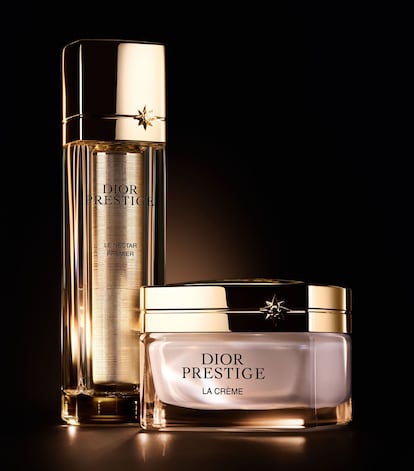
R-Retinoate Intense, by Medik8
This night cream incorporates advanced technologies within retinoids, with two faster and more effective molecules: retinaldehyde and retinyl retinoate. R-Retinoate Intense ($272) restores the appearance of beautiful skin. Includes copper peptide, hyaluronic acid, and ceramides.
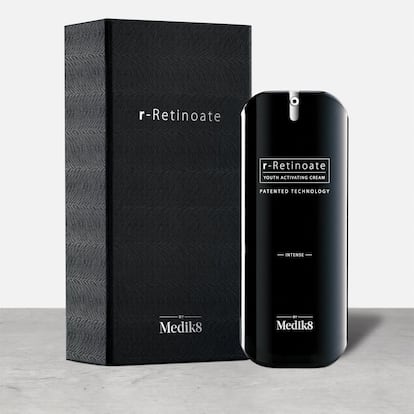
Orchidée Impériale Cream, by Guerlain
Cream enriched with the new orchid oil-concentrate composed of more than 90% oleo acids that multiply the skin’s nutrition level by 46. The Orchidée Impériale Cream ($525) provides the epidermis with the lipids and nutrients necessary for cellular cohesion and energetic activity.

Sublimage L’Extrait de Crème, by Chanel
Cream that combines the active fractions of Vanilla planifolia and swertia extract to regenerate the skin and accelerate its natural repair mechanisms. Sublimage L’Extrait de Crème ($685) provides a comprehensive action in terms of hydration, comfort, wrinkles, structure, strength, and shine.
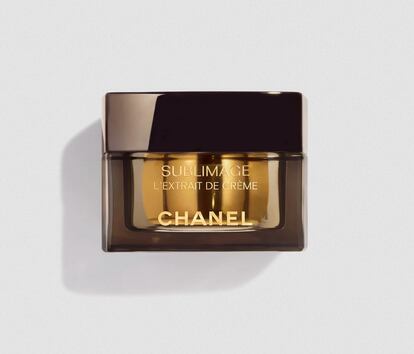
Future Solution LX Legendary Enmei Ultimate Renewing Cream, by Shiseido
A cream formulated with enmei herb extract and green silk that acts on all layers of the skin to revitalize and provide extra brightness. Future Solution XL Legendary Enmei (€545) regenerates, renews the skin’s surface, blurs wrinkles, firms and brightens.
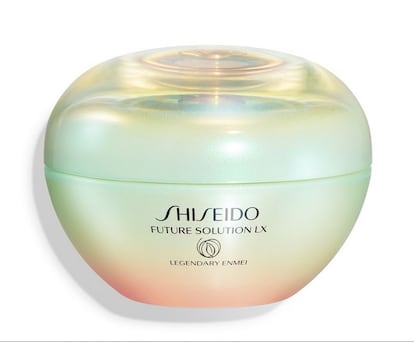
Sign up for our weekly newsletter to get more English-language news coverage from EL PAÍS USA Edition
Tu suscripción se está usando en otro dispositivo
¿Quieres añadir otro usuario a tu suscripción?
Si continúas leyendo en este dispositivo, no se podrá leer en el otro.
FlechaTu suscripción se está usando en otro dispositivo y solo puedes acceder a EL PAÍS desde un dispositivo a la vez.
Si quieres compartir tu cuenta, cambia tu suscripción a la modalidad Premium, así podrás añadir otro usuario. Cada uno accederá con su propia cuenta de email, lo que os permitirá personalizar vuestra experiencia en EL PAÍS.
¿Tienes una suscripción de empresa? Accede aquí para contratar más cuentas.
En el caso de no saber quién está usando tu cuenta, te recomendamos cambiar tu contraseña aquí.
Si decides continuar compartiendo tu cuenta, este mensaje se mostrará en tu dispositivo y en el de la otra persona que está usando tu cuenta de forma indefinida, afectando a tu experiencia de lectura. Puedes consultar aquí los términos y condiciones de la suscripción digital.
More information
Archived In
Últimas noticias
The late consecration of women artists in their 90s
The Florida Keys tourist paradise is besieged by immigration agents: ‘We’ve never seen anything like this’
The latest scam on WhatsApp behind the legal dream: using immigration status as bait
Oil, gold and rare earth elements: the backdrop to US political tension with Venezuela
Most viewed
- Families demand repatriation of bodies of Colombians who died in Ukraine: ‘This war is a slaughterhouse for foreigners’
- The low-cost creative revolution: How technology is making art accessible to everyone
- Liset Menéndez de la Prida, neuroscientist: ‘It’s not normal to constantly seek pleasure; it’s important to be bored, to be calm’
- Christian Louboutin: ‘Young people don’t want to be like their parents. And if their parents wear sneakers, they’re going to look for something else’
- ‘El Limones’ and the growing union disguise of Mexican organized crime
